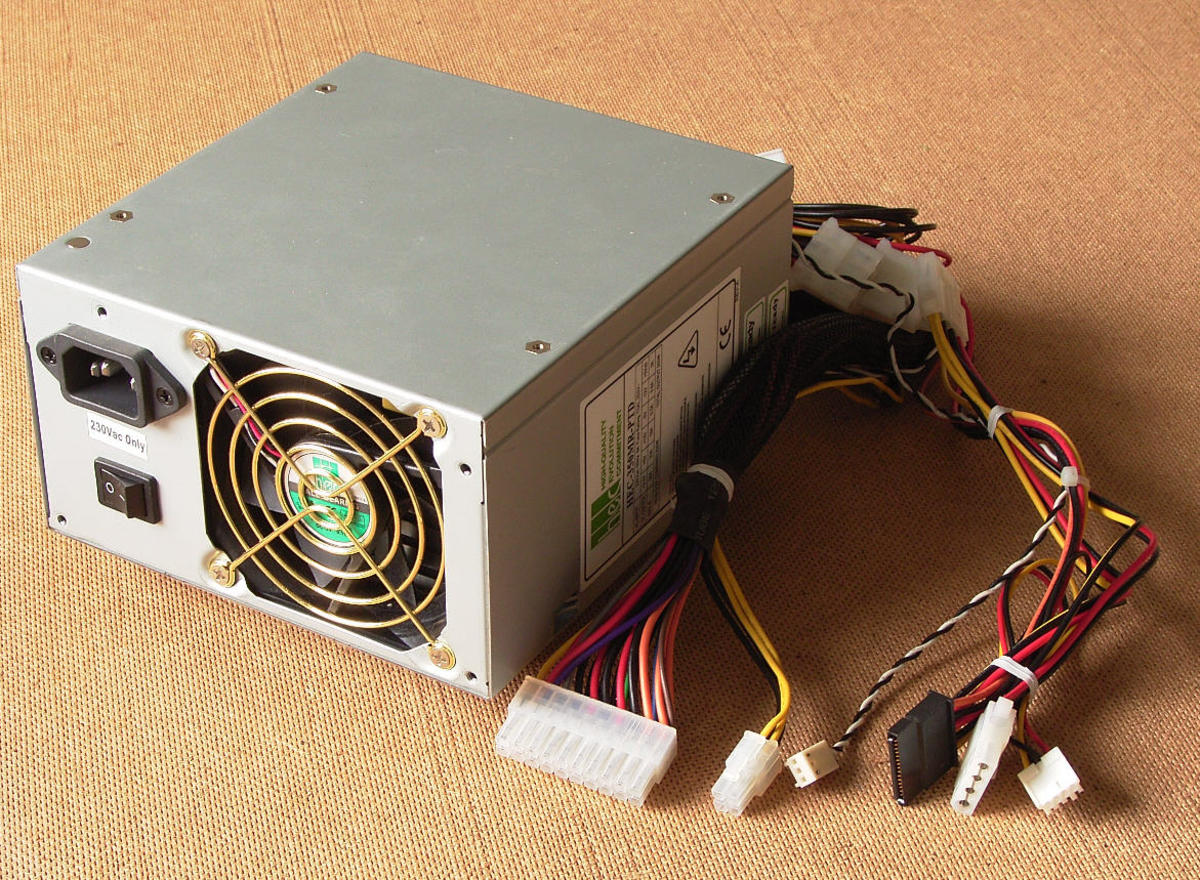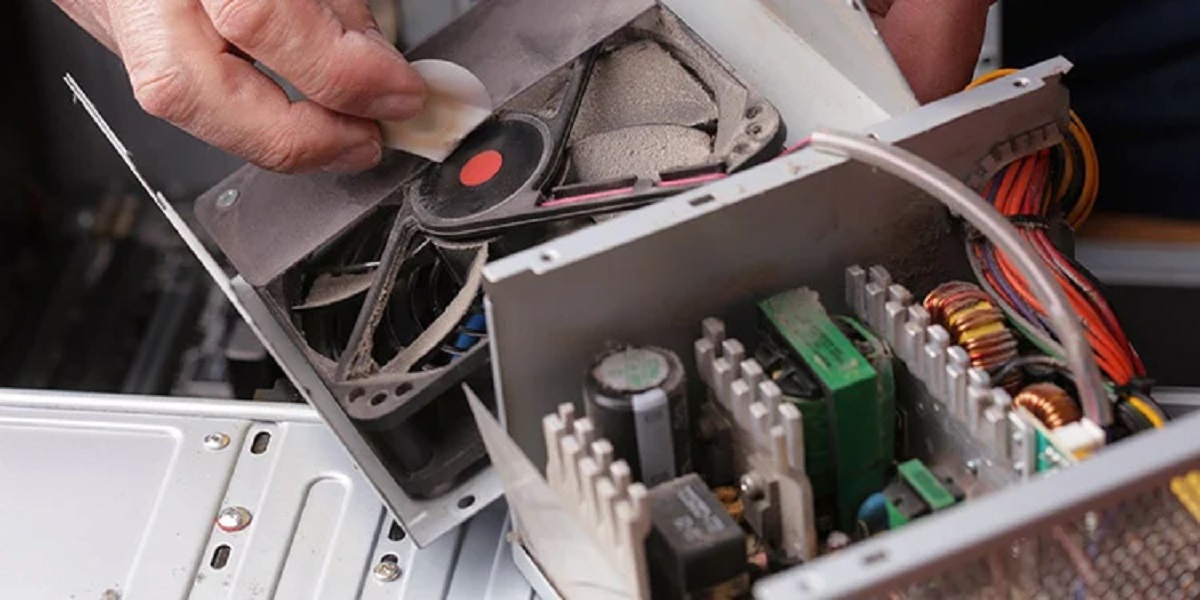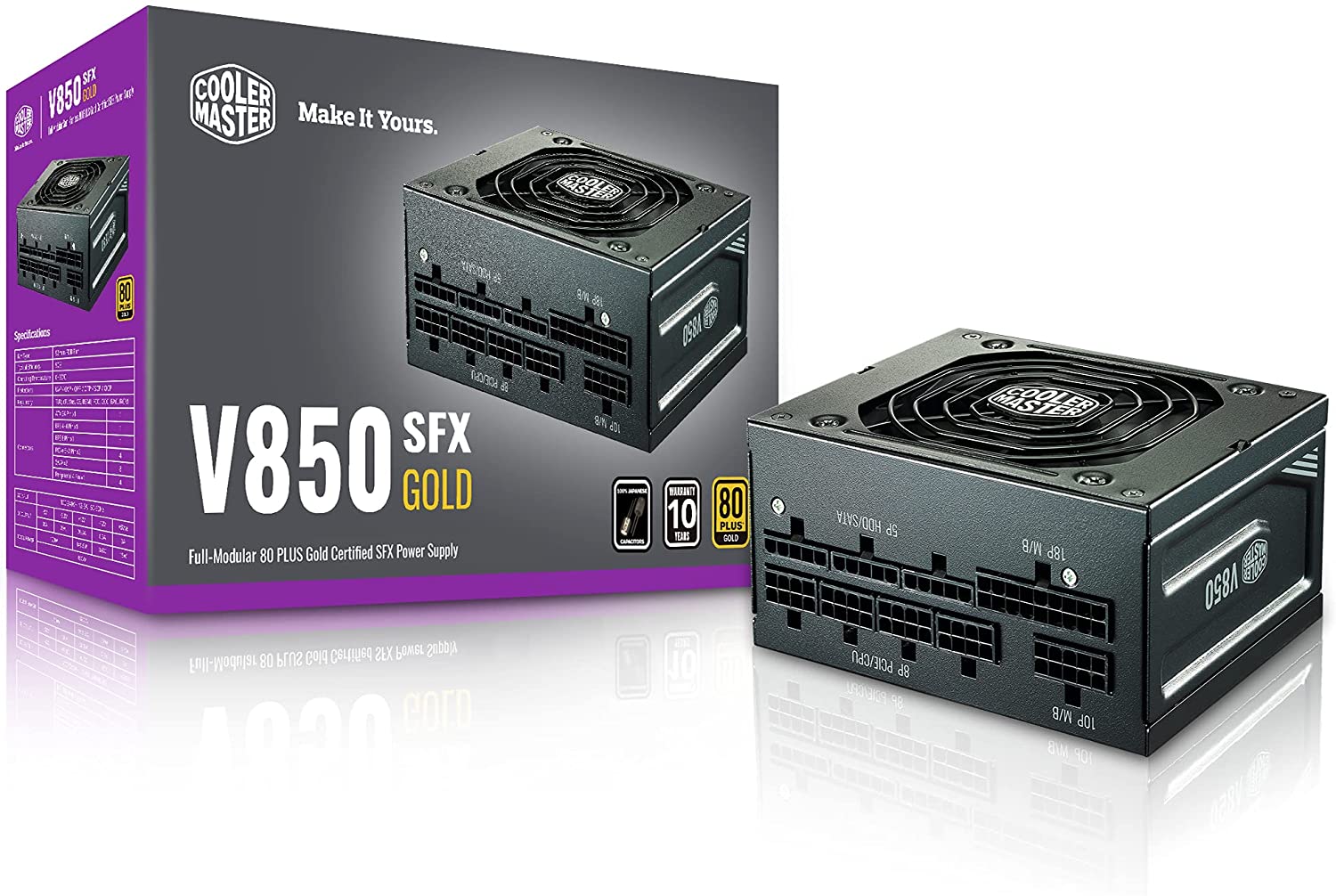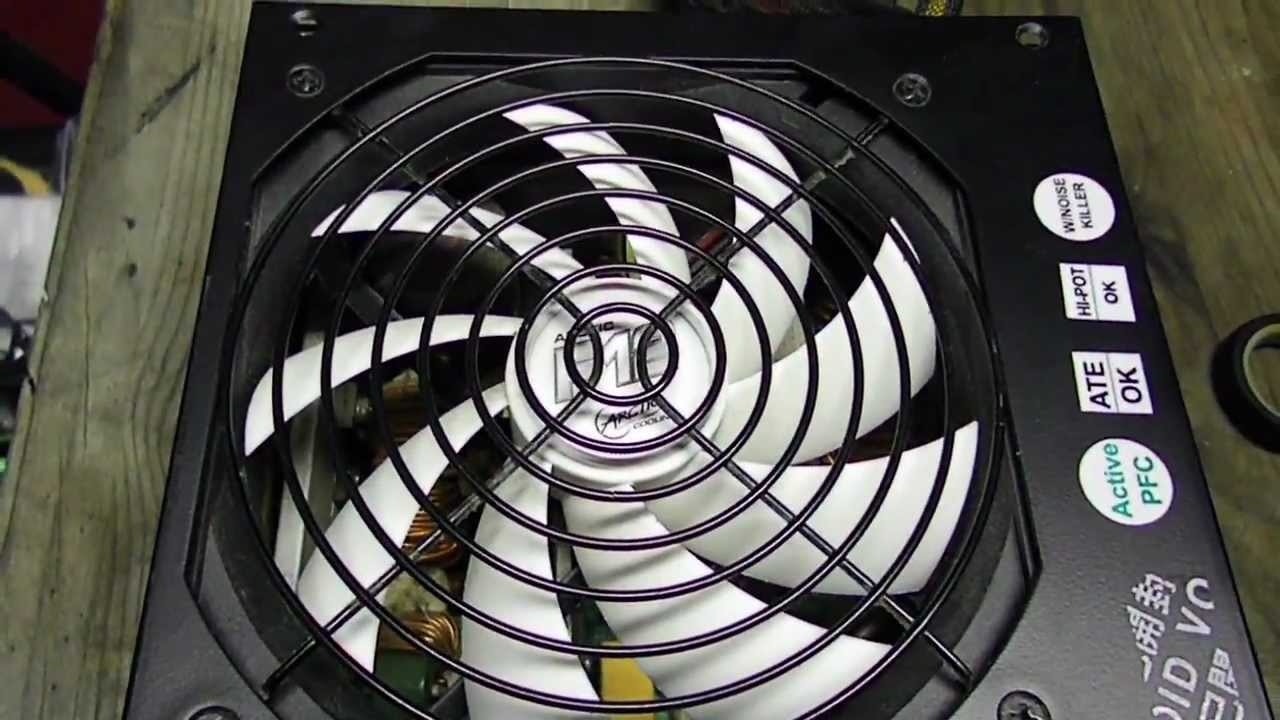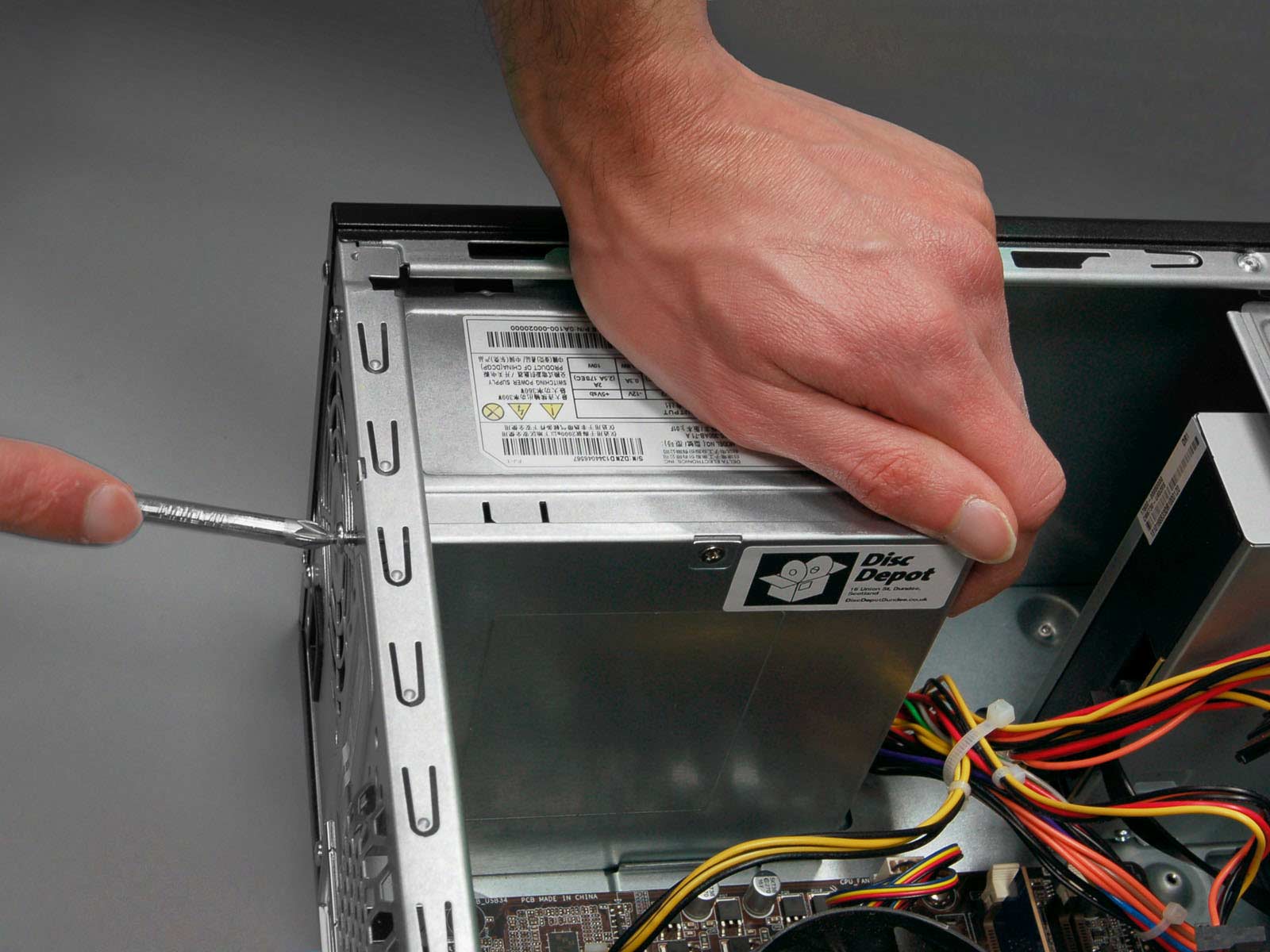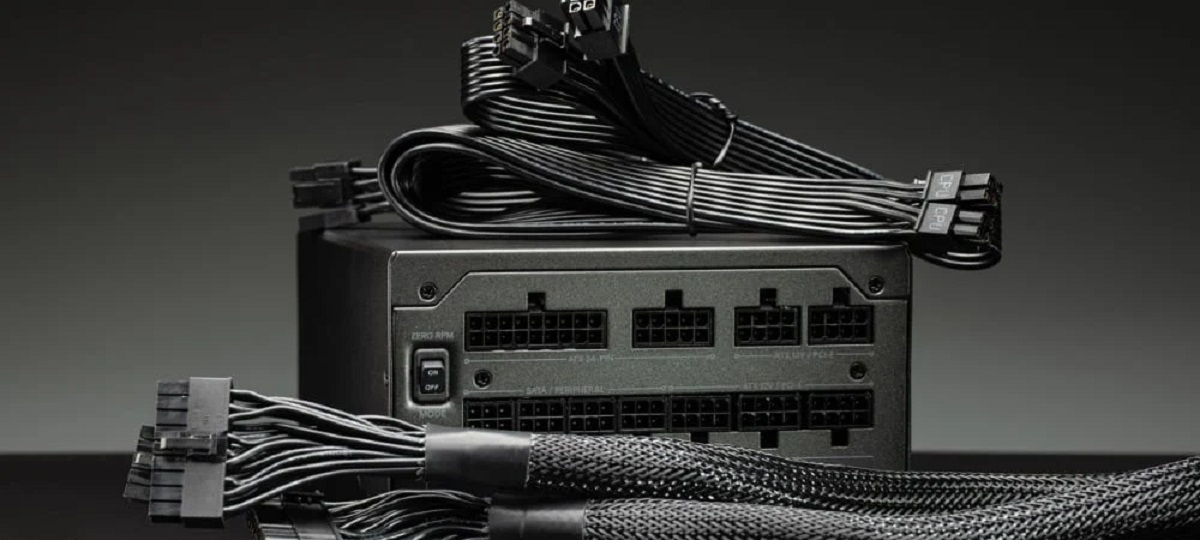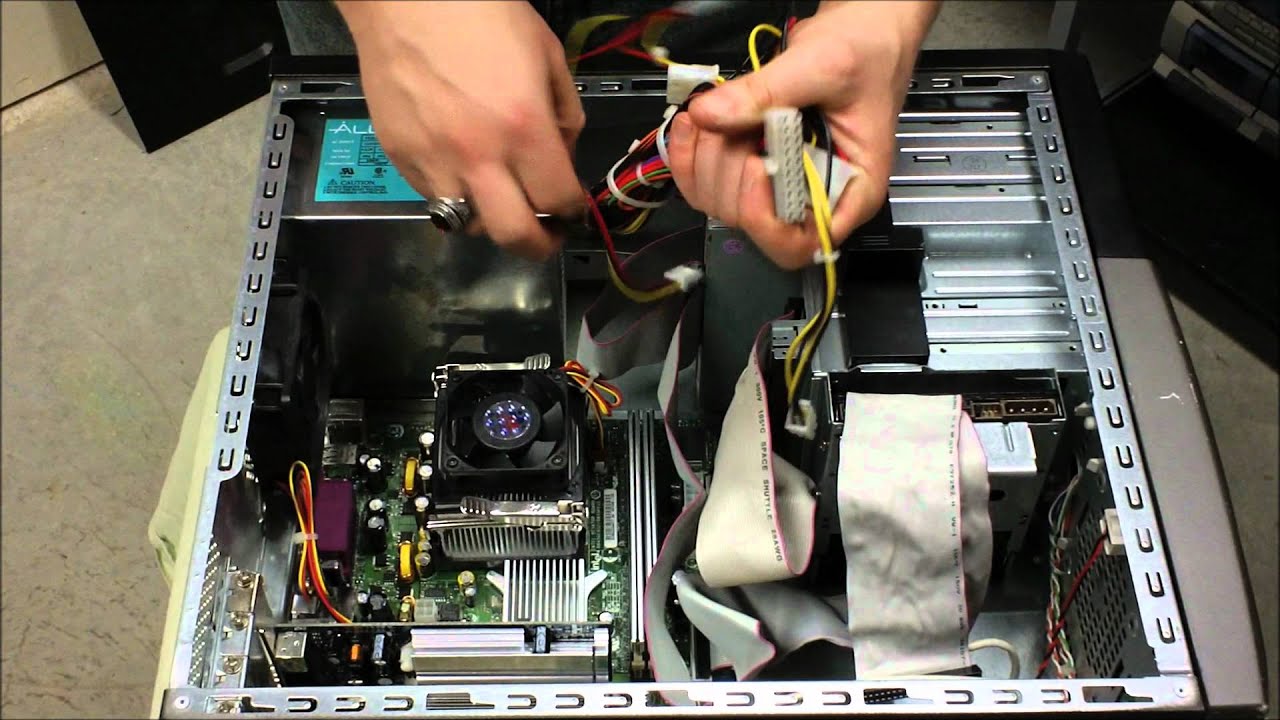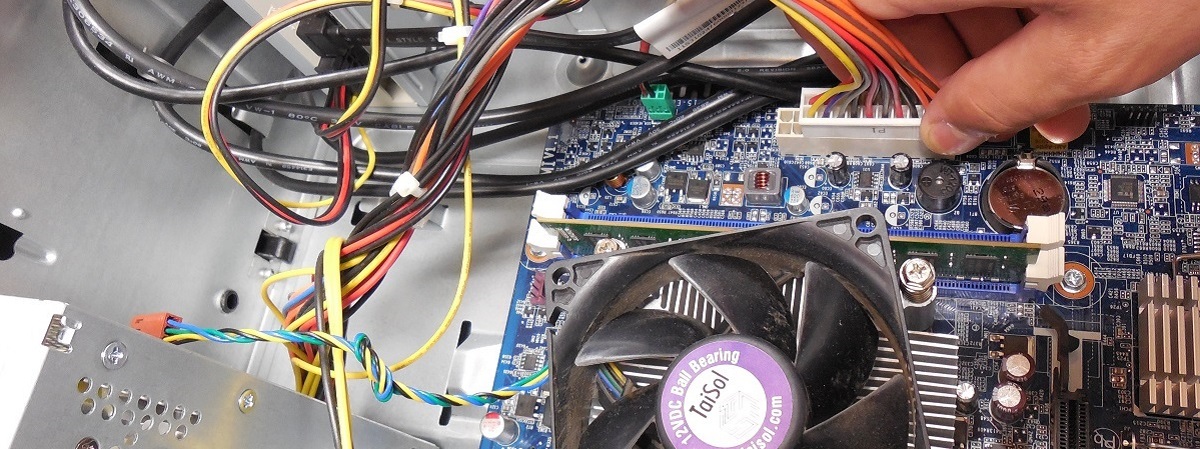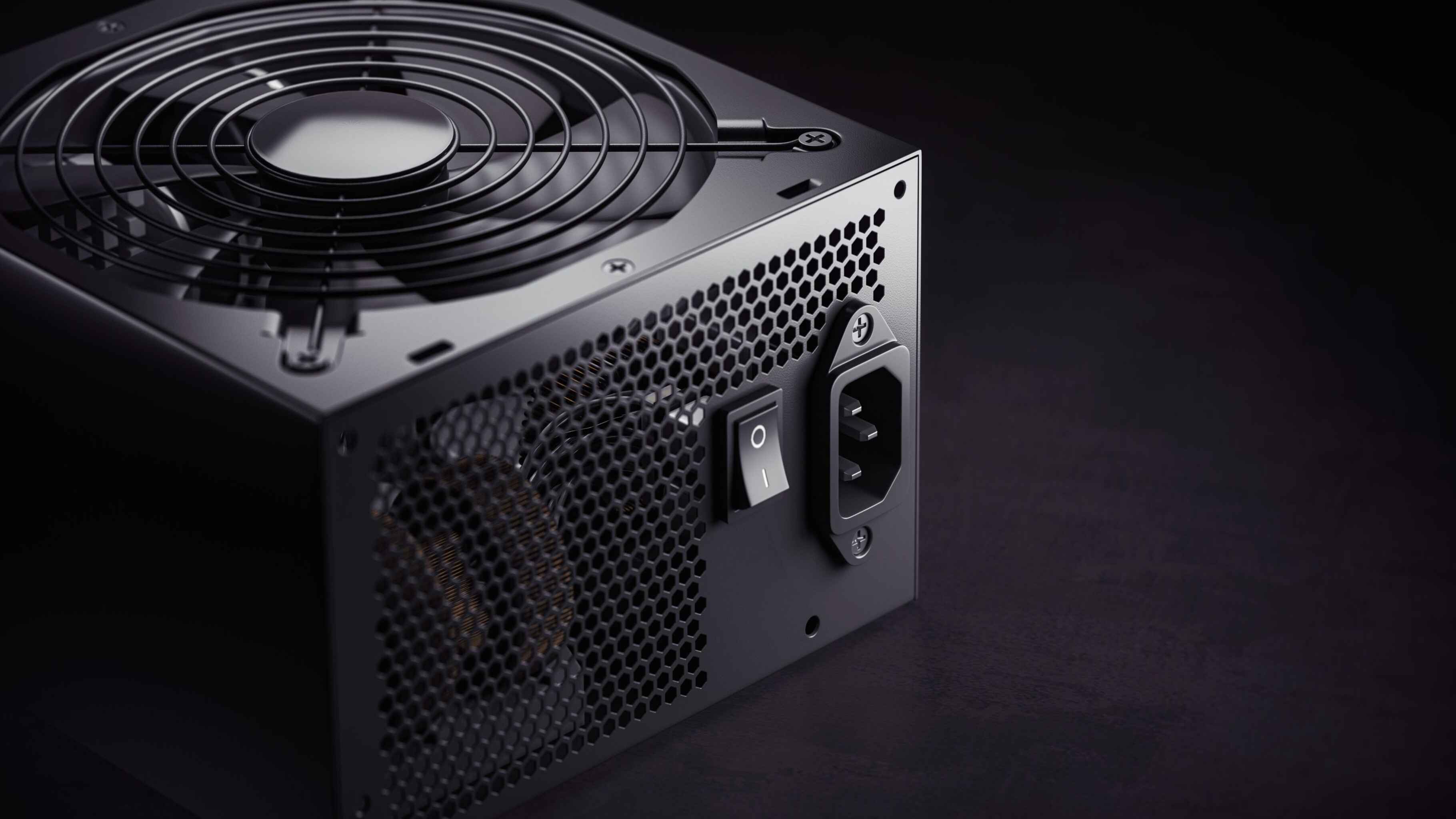Introduction
Welcome to the world of computers, where every component plays a vital role in the smooth functioning of your machine. One such essential component is the Power Supply Unit (PSU). Whether you are a computer enthusiast, a gamer, or a professional, understanding the importance of a reliable PSU is crucial for the optimal performance and longevity of your system.
A PSU is a critical component that converts the alternating current (AC) from your wall outlet into the direct current (DC) needed to power your computer’s internal components. It not only provides power but also regulates voltage and protects your computer from power surges or instability. Without a proper PSU, your computer may experience frequent crashes, hardware failures, and even irreversible damage.
Choosing the right PSU for your computer can be overwhelming, considering the numerous options available in the market. You need to consider factors like wattage, efficiency, compatibility, and additional features to ensure you make the best choice for your specific needs. In this article, we will guide you through the process of selecting the ideal PSU for your computer.
Whether you are building a new computer or upgrading your existing system, understanding the importance of a suitable PSU ensures that you provide enough power for all your components to operate optimally. By considering factors like wattage requirements, power efficiency, compatibility with your computer case, and the right connectors, you can ensure a smooth and reliable power supply to your hardware.
So, let’s dive into the world of power supplies and explore the factors you need to consider when choosing the right PSU for your computer. By the end of this article, you will have the knowledge and confidence to make an informed decision and enjoy a stable and efficient computing experience.
What is a Power Supply Unit (PSU)?
A Power Supply Unit (PSU) is a crucial component of your computer that supplies electrical power to all the other hardware components. It takes the alternating current (AC) power from your wall outlet and converts it into the direct current (DC) power required by your computer’s internal components.
The primary function of a PSU is to provide reliable and stable power to your computer’s hardware, ensuring that all the components receive the appropriate voltage and current they need to operate efficiently. Without a reliable PSU, your computer may experience power-related issues such as sudden shutdowns, system instability, or even damage to expensive hardware.
PSUs come in various form factors, ranging from standard ATX PSUs for desktop computers to smaller SFX PSUs for compact cases. They are typically rated by their wattage – the maximum amount of power they can deliver. Higher wattage PSUs provide more power and are suitable for systems with high-end components and demanding tasks like gaming or video editing.
PSUs consist of several important components, including transformers, capacitors, rectifiers, and regulators. These components work together to ensure a consistent and efficient flow of power throughout your computer. Modern PSUs also include features like voltage regulation, overvoltage protection, undervoltage protection, and short circuit protection to safeguard your system from power-related issues.
Additionally, PSU manufacturers often design their units to meet certain industry standards and certifications to ensure their reliability and efficiency. These certifications, such as 80 PLUS, indicate the PSU’s energy efficiency levels, with higher certifications indicating better efficiency.
It is important to note that the PSU’s wattage should be sufficient to meet the power requirements of your entire system. Insufficient wattage can lead to unstable power delivery, while excessive wattage can result in unnecessary energy consumption and increased heat generation.
In the next section, we will discuss why the PSU is important for your computer and why choosing the right one is crucial for optimal performance.
Why is the PSU important for your computer?
The Power Supply Unit (PSU) is a critical component of your computer that plays a vital role in ensuring its proper functioning and longevity. Here are a few reasons why the PSU is important:
1. Reliable Power Delivery: The PSU is responsible for providing a stable and reliable power supply to all the components of your computer. It converts the AC power from your wall outlet into the DC power required by your hardware. Without a reliable PSU, your computer may experience power fluctuations or insufficient power, leading to system crashes, hardware failures, and data loss.
2. Component Protection: A quality PSU protects your computer’s hardware from power surges, spikes, and voltage fluctuations. By regulating the voltage, it ensures that your components receive the correct amount of power, preventing damage caused by overvoltage or undervoltage. It also includes safety features like short circuit protection to safeguard against potential electrical hazards.
3. System Stability: The stability of your computer’s power supply is essential for its overall stability and performance. A PSU with adequate wattage ensures that all the components receive the necessary power to run efficiently without straining the PSU. This prevents system crashes, freezes, and unexpected shut downs, providing a smoother and uninterrupted computing experience.
4. Compatibility and Expansion: When choosing a PSU, it is crucial to consider its compatibility with your computer case and components. Different cases have specific PSU form factors they can accommodate. Additionally, if you plan on upgrading or adding more components to your system in the future, having a PSU with sufficient wattage and the necessary connectors ensures compatibility and flexibility for future expansion.
5. Energy Efficiency: A quality PSU not only provides reliable power but also operates efficiently to minimize energy wastage. PSU efficiency is measured by certifications like 80 PLUS, with higher certifications indicating better energy efficiency. An efficient PSU not only helps reduce your electricity bills but also produces less heat, leading to a cooler and quieter system.
In summary, the PSU is a crucial component that ensures reliable power delivery, protects your hardware, maintains system stability, offers compatibility for future upgrades, and promotes energy efficiency. Choosing a high-quality PSU that meets the power requirements and specifications of your computer is essential for optimal performance and longevity.
Factors to consider when choosing a PSU
Choosing the right Power Supply Unit (PSU) for your computer is crucial for ensuring optimal performance and reliability. Here are some important factors to consider when selecting a PSU:
1. Wattage requirements: Determine the power requirements of your computer by considering the power consumption of your components, including the CPU, GPU, RAM, storage drives, and peripherals. It is recommended to choose a PSU with a wattage slightly higher than the total power consumption to provide some headroom for future upgrades and ensure stable power delivery.
2. Efficiency and certifications: Look for PSUs with high energy efficiency ratings, such as 80 PLUS certifications. These certifications indicate the PSU’s ability to convert AC power to DC power efficiently, resulting in lower energy wastage and reduced heat generation. A more efficient PSU not only saves energy but also operates quietly.
3. PSU form factor and compatibility: Consider the form factor of your computer case and ensure that the PSU you choose fits properly. The most common form factor is the ATX, but there are also smaller form factors like SFX and TFX. Additionally, check for compatibility with your motherboard’s power connector (usually 24-pin) and any additional connectors required for your components.
4. PSU connectors and cables: Ensure that the chosen PSU has the necessary connectors and cables to connect all your components. Check for SATA power connectors for storage drives, PCIe connectors for the GPU, and various other connectors for fans, RGB lighting, and peripherals. Also, consider modular or semi-modular PSUs that allow you to connect only the necessary cables, reducing cable clutter inside your case.
5. Brand reputation and reliability: Invest in PSUs from reputable brands known for their quality and reliability. Brands like Corsair, EVGA, Seasonic, and Thermaltake are well-regarded for manufacturing high-quality PSUs. Read reviews and customer feedback to gauge the reliability and performance of different PSU models.
6. Noise level: PSU fans are responsible for cooling the unit, and some models may produce more noise than others. Look for PSUs that have a quiet fan operation or fanless designs if noise is a concern for you. Noise can affect the overall user experience, especially for those who prefer a quieter computing environment.
7. Warranty and customer support: Check the warranty provided by the PSU manufacturer, as it reflects their confidence in the product. A longer warranty period is preferable, typically ranging from three to ten years. Additionally, consider the availability of reliable customer support in case you encounter any issues or have questions regarding the PSU.
By taking these factors into consideration, you can choose a PSU that meets your computer’s power requirements, offers compatibility with your components, operates efficiently, and provides reliable performance for years to come.
Wattage requirements for different components
When choosing a Power Supply Unit (PSU) for your computer, it is important to consider the wattage requirements of your components. Each component in your system has its own power consumption, and adding up these requirements will help determine the overall wattage needed for your PSU. Here are the typical wattage requirements for different components:
1. Central Processing Unit (CPU): The CPU is one of the most power-hungry components in your system, especially if you have a high-end or overclockable processor. Depending on the model, CPUs can range from 65 watts for low-power CPUs to over 200 watts for high-performance CPUs. It is important to check the specifications of your specific CPU to determine its power consumption.
2. Graphics Processing Unit (GPU): The GPU is another component that requires significant power, particularly if you are a gamer or engage in graphic-intensive tasks like video editing. Gaming GPUs can consume anywhere from 75 watts for entry-level cards to over 300 watts for high-end graphics cards. Consider the power requirements of your specific GPU model and the number of GPUs if running multiple in SLI or Crossfire configurations.
3. Random Access Memory (RAM): RAM modules have low power consumption and typically require around 5 watts or less per module. However, the number of modules and their frequency can impact the overall power usage. For most systems, the power requirements of RAM can be considered negligible compared to other components.
4. Storage Drives: Hard Disk Drives (HDDs) and Solid-State Drives (SSDs) have minimal power requirements, usually ranging from 5 to 10 watts. However, large-capacity HDDs or high-performance NVMe SSDs may demand slightly higher power. It is essential to account for the number of storage drives you have in your system when calculating overall power consumption.
5. Motherboard and Peripherals: The power consumption of the motherboard itself is relatively low, typically around 20 to 50 watts. However, additional components like fans, RGB lighting, sound cards, and network cards can consume additional power. Consider the power requirements of any additional components you have installed on your motherboard. Peripherals such as USB devices, keyboards, mice, and monitors consume minimal power and can generally be ignored when determining PSU wattage requirements.
6. Overhead and Future Upgrades: It is recommended to have some overhead when choosing a PSU to provide headroom for future upgrades or additions to your system. Adding an extra 100 to 150 watts to the calculated power consumption can accommodate future expansion without the need to replace the PSU.
By considering the power requirements of each component and factoring in overhead for future upgrades, you can determine the minimum wattage needed for your PSU. It is important to note that these requirements are general estimates, and it is advisable to consult the specific product specifications and manufacturer recommendations for accurate wattage information.
Power efficiency and certifications
When selecting a Power Supply Unit (PSU) for your computer, power efficiency is an important factor to consider. Power efficiency refers to the ability of a PSU to convert AC power from the wall outlet into DC power needed by your components, minimizing energy wastage in the process. Higher efficiency means less energy is lost as heat, resulting in lower electricity bills and reduced environmental impact. Here are some key points to understand about power efficiency and certifications:
1. 80 PLUS Certifications: The 80 PLUS program is a voluntary certification initiative introduced by Ecos Consulting in 2004. PSUs that meet the program’s criteria are certified and labeled with the corresponding 80 PLUS logo. The certifications are divided into different levels, including 80 PLUS, 80 PLUS Bronze, 80 PLUS Silver, 80 PLUS Gold, 80 PLUS Platinum, 80 PLUS Titanium, with each level indicating increasing levels of efficiency.
2. Efficiency Levels: The efficiency levels of 80 PLUS certifications represent the PSU’s efficiency at different workload percentages. For example, an 80 PLUS Gold certified PSU has a minimum efficiency of 87%, 90%, 87% at 20%, 50%, and 100% workload, respectively. A higher efficiency level means less energy loss and higher overall efficiency, making it a more environmentally friendly choice.
3. Real-World Efficiency: It is important to note that PSU efficiencies mentioned in certifications are measured at specific load conditions and do not precisely represent real-world usage scenarios. PSU efficiency is generally highest between 50% and 80% of its maximum load capacity. Therefore, choosing an appropriately sized PSU for your system’s power consumption is vital to maximize efficiency under typical usage conditions.
4. Energy Cost Savings: Opting for a more efficient PSU can result in long-term energy cost savings. Although the initial investment might be slightly higher, the reduced energy consumption can lead to lower electricity bills over the lifespan of the PSU. The extent of energy savings depends on the specific PSU and the usage patterns of your computer.
5. Other Factors to Consider: While efficiency is an important consideration, it should not be the sole determining factor when choosing a PSU. Other factors like brand reputation, build quality, reliability, and compatibility should also be taken into account. It is recommended to look for PSUs from reputable brands that offer a balance of efficiency, reliability, and performance.
6. Energy Star : Apart from the 80 PLUS certifications, you may also consider PSUs with the Energy Star certification. Energy Star is a government-backed program that promotes energy efficiency in consumer electronics and other products. It sets standards for power consumption in standby and active modes to reduce energy waste and environmental impact.
By selecting a PSU with an appropriate 80 PLUS certification or Energy Star compliance, you can ensure that your computer operates at optimal power efficiency, reducing energy consumption and costs. It is important to choose a PSU that meets your specific power requirements while balancing efficiency and other important factors to achieve a well-rounded and efficient system.
Compatibility with your computer case
When choosing a Power Supply Unit (PSU) for your computer, it is crucial to consider compatibility with your computer case. The PSU must physically fit inside the case and align with the mounting points and connectors. Here are some important considerations for PSU compatibility:
1. Form Factor: The PSU’s form factor should match the corresponding form factor of your computer case. The most common form factor for desktop computers is ATX, but there are also smaller form factors like SFX and TFX. Confirm the form factor of your computer case and choose a PSU that matches it to ensure a proper fit.
2. Dimensions and Clearance: Check the dimensions of the PSU and compare them with the available space inside your computer case. Ensure that the PSU will fit within the designated PSU mounting area without obstructing other components or cables. Consider any clearance requirements for cable management and proper airflow to maintain system cooling.
3. Mounting Points: Verify that your computer case has the appropriate mounting points or screw holes to secure the PSU. The mounting holes should align properly with those on the PSU to ensure a stable and secure installation. It is important to note that some smaller form factor PSUs may require an adapter bracket to fit into larger cases.
4. Airflow and Ventilation: Consider the PSU’s fan orientation and the airflow design of your computer case. Some PSUs have bottom-mounted fans that draw in cool air from beneath the case and exhaust hot air out of the rear, while others have top-mounted fans that exhaust air out of the top. Ensure that the PSU’s fan placement aligns with the case’s airflow and ventilation setup to optimize cooling and prevent overheating.
5. Cable Management: Pay attention to the cable length of the PSU and the configuration of your computer case. A PSU with cables that are too short may not reach the necessary components, while excessively long cables can lead to cable clutter and hinder effective cable management. Modular or semi-modular PSUs allow you to connect only the necessary cables, offering better cable management options.
6. Power Connector: Confirm that the PSU’s power connector (usually a 24-pin ATX connector) is compatible with your motherboard. Different generations of motherboards may have different power connector requirements, so ensure compatibility to avoid any power connection issues.
7. Additional Connectors: Check if the PSU has all the necessary power connectors for your components, such as SATA power connectors for storage drives and PCIe connectors for the graphics card. Consider the number and types of connectors required by your specific hardware and ensure that the PSU meets these requirements.
By considering the compatibility of the PSU with your computer case, you can ensure a proper fit, easy installation, efficient cable management, and optimal airflow. It is important to refer to the specifications of both the PSU and case to ensure a seamless integration of these components for a well-organized and functional computer setup.
Choosing the right PSU connectors
When selecting a Power Supply Unit (PSU) for your computer, it is crucial to consider the available connectors and their compatibility with your components. Different components require specific connectors to receive power. Here are some important considerations when choosing the right PSU connectors:
1. Motherboard Power Connector: The primary power connector for the motherboard is usually a 24-pin ATX connector. Make sure that the PSU you choose has this connector and that it is compatible with your motherboard. Some motherboards may also require additional 4-pin or 8-pin (EPS) connectors for CPU power.
2. Graphics Card Power Connectors: High-performance graphics cards often require additional power connectors, typically in the form of 6-pin or 8-pin PCIe connectors. Check the power requirements of your graphics card and ensure that the PSU has enough PCIe connectors to supply the necessary power. Some high-end graphics cards may require multiple power connectors.
3. Storage Drive Power Connectors: Hard Disk Drives (HDDs) and Solid-State Drives (SSDs) typically use SATA power connectors. Check the number of SATA power connectors on the PSU and ensure it can accommodate the number of storage drives in your system. If you have older drives using Molex connectors, make sure the PSU also provides Molex connectors or SATA-to-Molex adapters.
4. Peripheral Power Connectors: Various peripherals such as fans, RGB lighting, and cooling pumps may require power connections. These devices typically use either Molex connectors or SATA power connectors, so ensure that the PSU has sufficient connectors to power your peripherals.
5. CPU Cooler Power Connectors: Check if your CPU cooler requires power. Some high-performance CPU coolers may require additional power for their fans or RGB lighting. Ensure that the PSU has the necessary connectors to power the CPU cooler if required.
6. Modular or Non-modular: Consider whether you prefer a modular or non-modular PSU. A modular PSU allows you to connect only the necessary cables, reducing cable clutter and improving airflow in the case. Non-modular PSUs have all the cables permanently attached, which may lead to more cable management challenges. Choose the option that suits your cable management preferences.
7. Future Expansion: If you plan on upgrading or adding components in the future, consider the potential power requirements of these components and ensure that the PSU has enough connectors or additional adapters to meet those requirements. Future-proofing your PSU connectors can save you from needing to upgrade the PSU when you expand your system.
By considering the specific power connectors required by your components and ensuring compatibility with the PSU, you can guarantee that all your components receive the necessary power to function properly. Be thorough with your component power requirements and review the PSU’s specifications and available connectors to make an informed decision.
Additional features to consider
When choosing a Power Supply Unit (PSU) for your computer, there are various additional features you can consider that can enhance the performance, reliability, and convenience of your system. While these features may not be essential, they can offer added benefits depending on your specific needs. Here are some additional features to consider:
1. Fan Design and Noise: Some PSUs come with advanced fan designs, such as hydrodynamic bearings or fluid dynamic bearings, which can help reduce noise and increase the lifespan of the fan. Look for PSUs with low noise ratings and efficient cooling, especially if you prefer a quieter computing experience or have a system that generates a lot of heat.
2. Fanless Design: Fanless PSUs, also known as passive PSUs, operate without a fan and rely on heat sinks for cooling. These PSUs are completely silent but are typically only suitable for low-power or energy-efficient systems with lower heat production. Consider a fanless design if you prioritize silence and have lower power requirements.
3. Modular or Semi-Modular Cabling: Modular and semi-modular PSUs allow you to connect only the necessary cables, reducing cable clutter inside your case. This improves airflow and makes cable management easier. It also makes it simpler to upgrade or replace components in the future without the need to rearrange cables.
4. Power Efficiency Monitoring: Some high-end PSUs come with software or built-in monitoring capabilities that allow you to monitor the PSU’s power efficiency, voltage, and temperature. This can help you keep track of your system’s power consumption and detect any potential issues or anomalies.
5. Overvoltage and Overload Protection: Look for PSUs with built-in protection mechanisms against overvoltage and overload. These features can safeguard your components from potential electrical damage due to power spikes or excessive power consumption. This adds an extra layer of protection to your system’s hardware.
6. Power Factor Correction (PFC): PFC is a feature that improves the efficiency of the PSU by reducing reactive power and improving power factor. PSUs with active PFC or passive PFC can help minimize energy wastage and provide stable and efficient power delivery to your components.
7. Warranty and Customer Support: Pay attention to the warranty provided by the PSU manufacturer. A longer warranty period typically reflects the manufacturer’s confidence in their product’s reliability. Additionally, reliable customer support can be beneficial in case you encounter any issues or have questions regarding the PSU.
Consider these additional features based on your specific requirements and preferences. While they may not be essential for all users, they can add value and convenience to your computer system. Evaluate the importance of these features in relation to your budget and choose a PSU that offers the best combination of features for your needs.
Conclusion
Choosing the right Power Supply Unit (PSU) is a crucial decision when building or upgrading your computer. A quality PSU ensures stable and efficient power delivery to your components, protecting them from power-related issues and maximizing their performance. By considering various factors such as wattage requirements, power efficiency, compatibility with your computer case and components, and the right connectors, you can select a PSU that meets your specific needs.
When determining the wattage requirements, assess the power consumption of your CPU, GPU, RAM, storage drives, and other components. A PSU with sufficient wattage will provide the necessary power for smooth and reliable operation while allowing room for future upgrades. Consider the efficiency and certifications of the PSU to minimize energy wastage and reduce energy costs.
Ensure compatibility with your computer case by checking the PSU form factor, dimensions, mounting points, and ventilation. This ensures a proper fit and proper airflow for effective cooling. Select the right PSU connectors by considering the power requirements of your motherboard, graphics card, storage drives, and other peripherals. Modular or non-modular options can help with cable management and customize your cable setup.
Additional features like advanced fan designs, noise reduction, modular cabling, and power efficiency monitoring can enhance your computing experience, but their importance will vary depending on your individual preferences and requirements.
By carefully considering all these factors, you can make an informed decision and choose the right PSU that meets the power requirements of your components, ensures compatibility and efficiency, and enhances the performance and reliability of your computer system.







